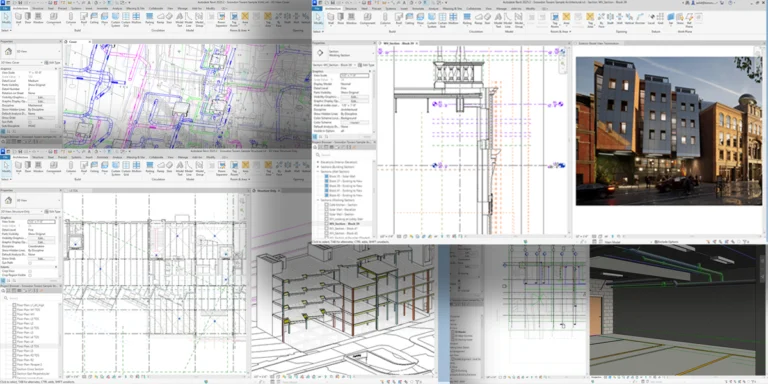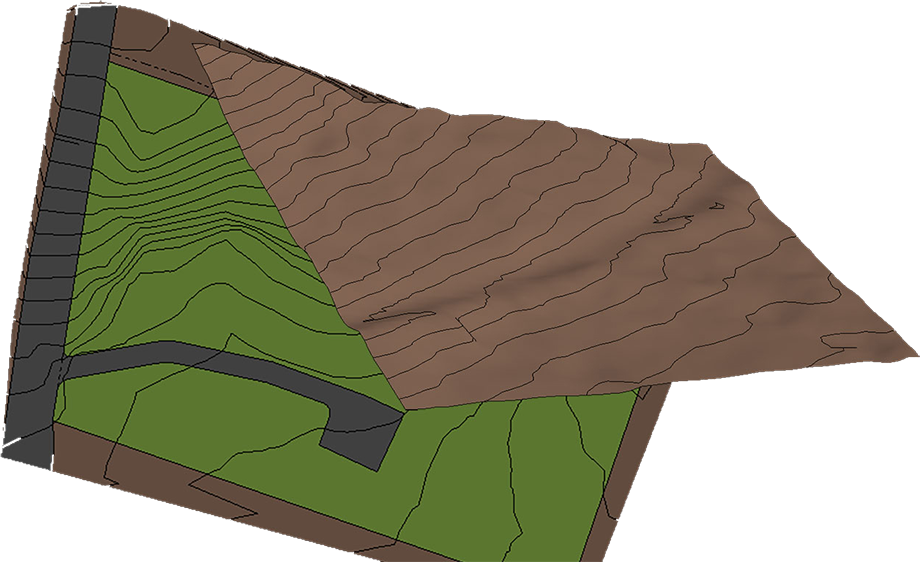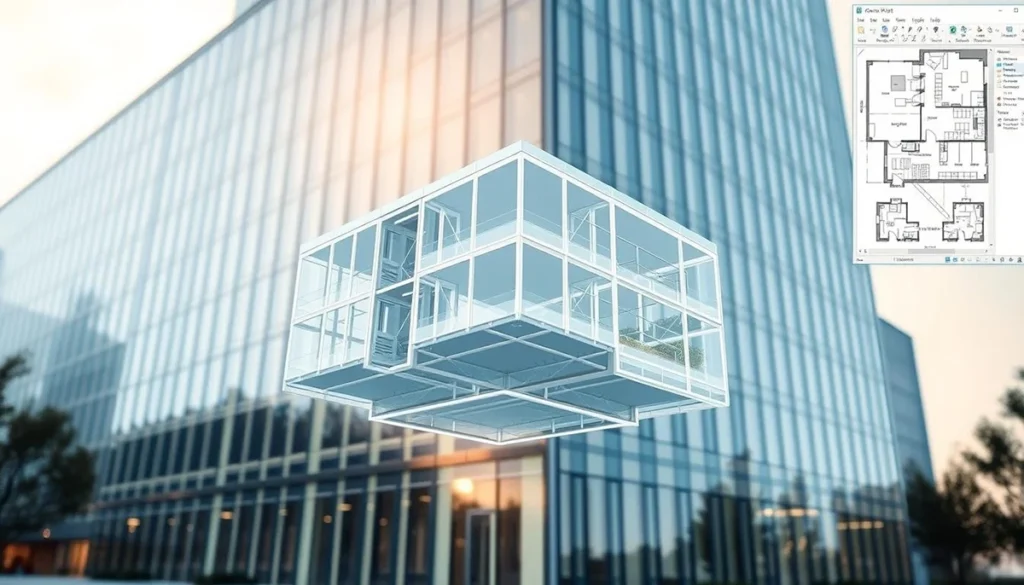Understanding Revit A Comprehensive Overview
Published Date
Last Modified

Understanding Revit A Comprehensive Overview
What is Revit?
Revit is a sophisticated software tool for building information modeling (BIM), created by the renowned company Autodesk. This software is specifically tailored to meet the needs of architects, engineers, and professionals working in the construction industry. One of the key features of Revit is its collaborative nature. This allows multiple users to work together effectively. They can create accurate and highly detailed three-dimensional models of buildings. This functionality is not just a convenience. It has become essential for modern architectural practices. These practices require precision and efficiency. Unlike traditional computer-aided drafting (CAD) software, which often works in separate dimensions, Revit provides an integrated approach. This software unifies all aspects of design into one cohesive model. This includes structural components, architectural details, and MEP elements, which encompass mechanical, electrical, and plumbing systems, all within one unified platform. By doing so, Revit streamlines the design process and enhances coordination among various disciplines involved in a project.
The Benefits of Revit in Construction
In today’s fast-changing construction industry, the need for accuracy and efficiency is crucial. The software known as Revit significantly enhances productivity levels by allowing multiple users to collaborate on the same project concurrently. This functionality is pivotal in ensuring that teams can stay aligned and maintain workflow without interruptions.
The collaborative feature of Revit plays a vital role in fostering teamwork and communication among project members. When a user makes changes to the design, those updates appear across the entire project in real-time. This capability greatly diminishes the likelihood of errors arising from miscommunication or outdated information. Furthermore, Revit provides construction professionals the ability to visualize designs as they are actively working. This tool helps avoid costly errors and keeps projects on schedule. This promotes a smoother construction process overall.
Key Features of Revit
Revit offers various key features essential for professionals in the architecture, engineering, and construction industries. One of its most notable features is its strong parametric modelling capabilities. These allow users to create complex 3D designs that can adapt and change based on different parameters. Additionally, Revit provides extensive libraries that contain a wide range of materials, components, and family objects. These libraries enable users to select the most appropriate elements for their projects easily. The software includes advanced tools for creating schedules and quantifications. These tools help streamline project management and enhance overall efficiency. Revit features an intuitive and user-friendly interface. This simplifies working with various file types. It also makes integration with other software tools easy. These tools are commonly used in construction projects. Ultimately, understanding how to use Revit effectively can greatly improve design quality and execution in construction projects. This knowledge enhances overall project outcomes.
Revit for Architects
Revit is a powerful building information modeling (BIM) software. Architects widely use it during the design and planning stages of their projects. Its special features let users build detailed 3D models. These models include not only how a building looks but also its structure, mechanical parts, and electrical systems.
This integration allows you to see all design elements in relation to each other. This helps improve the overall understanding of the project. Revit helps architects work better with their teams, consultants, and contractors by allowing real-time collaboration. This makes the design process easier and more efficient from beginning to end.
In practical terms, Revit offers architects numerous benefits that facilitate their daily tasks and improve project outcomes.
One important feature of this software is its parametric design. This means that when you change one part of the model, all related parts will update automatically. When an architect decides to change the height of a wall in a building design, the software they use can automatically adjust the sizes of all windows and doors on that wall. This feature is very helpful because it keeps the design consistent and visually pleasing. Instead of the architect having to resize each window and door manually, the software does it automatically. This automation saves architects significant time and reduces errors. It makes the entire design process easier and more efficient.
This means that if the wall height changes, the software will automatically resize the openings for windows and doors. This ensures that they remain proportionate and functionally appropriate within the new wall dimensions. This feature improves accuracy in the design process and saves time. It allows architects to focus on other important aspects of the project. They no longer need to manually adjust each element related to the changed wall height.
This means that when the architect changes the wall height, the software automatically resizes the windows and doors. There is no need for the architect to adjust each element manually. The software ensures that all components match the new wall dimensions seamlessly. This not only saves time but also helps keep design integrity. It ensures that the architectural plans stay coordinated and consistent throughout the project.
This means that if the wall gets taller or shorter, the openings will resize to fit correctly. This feature speeds up the design process. It updates everything automatically, so you don’t have to change each element by hand. This saves time and reduces the chance of mistakes that can happen when updates are done by hand in different documents.
Revit provides many ready-made parts and design templates for different architectural projects. This large collection is very helpful for architects. It makes it easier to start new projects. With these tools, architects can focus more on the creative side of their work.
This means they can spend more time and resources on new designs and solving difficult problems. They do not have to get stuck on boring and repetitive tasks that slow them down. By reducing the time spent on these tasks, they can improve their efficiency and creativity in their work.
Moreover, Revit supports a comprehensive documentation process, which is essential for conveying complex design intents. The software generates construction documents that are automatically updated in accordance with the project model.
By using this feature, architects can create plans, sections, and elevations with great accuracy. This capability ensures that the drawings genuinely reflect the most current and updated version of their design work.
This helps architects keep their documents consistent. Consistency is important for clear communication with everyone involved and for making sure the project moves forward successfully.
By doing so, it guarantees that all associated documentation remains precise and consistent throughout the entire project. This level of accuracy is crucial for clear communication among team members and stakeholders. It leads to a smoother workflow and better project outcomes.
Additionally, creating detailed schedules for materials and quantities helps architects stay organized. This also promotes clear communication with contractors and clients about project specifications and timelines.
Lastly, as sustainability becomes increasingly crucial in the architectural field, Revit offers tools that support energy analysis and building performance simulations. Architects can use these features to evaluate the energy efficiency of their designs early on. This enables them to make informed choices that promote sustainable building practices. This proactive approach aligns with modern architectural principles and meets the increasing demand for environmentally responsible designs. Overall, Revit is an essential tool for architects. It helps improve design processes and create high-quality, efficient building solutions.
Revit is a powerful software tool designed to help structural engineers in the architecture, engineering, and construction (AEC) industry. It enables users to create detailed three-dimensional models of buildings. This helps them visualize their designs more effectively. The software offers a platform for engineers to combine different components. These include beams, columns, foundations, and other structural elements. Together, they form a unified digital model. This functionality streamlines the design process, improves accuracy, and ultimately supports better decision-making throughout the project’s lifecycle.
Revit for Structural Engineers
Revit for Structural Engineers involves Modelling structural elements is an essential aspect of building design. This process entails creating detailed representations of components like beams, columns, walls, and foundations using specialized software. Well-modelled elements help architects and engineers see how these parts fit into the overall design. This understanding is vital for ensuring the structure’s safety and meeting regulatory requirements. High-quality visuals help identify possible issues early, saving time and money during construction.
In the realm of Building Information Modeling (BIM), modelling structural elements becomes simpler and promotes collaboration. Each component can be designed in 3D, demonstrating how they connect. For example, when designing a beam, users can specify its material, dimensions, and how it interfaces with other elements. This aids in assessing the structure’s load-bearing capacity and performance. Additionally, this level of detail contributes to creating accurate construction documents, enhancing communication among architects, engineers, and contractors, thereby streamlining the building process.
Employing software like Revit for modelling structural elements offers numerous advantages. It includes tools to develop intelligent models, where each element functions as a dynamic object. Any modification to one part of the model automatically updates throughout, ensuring consistency and minimizing errors. Revit allows users to conduct simulations, like load tests and material analyses. These simulations help inform better design decisions. Ultimately, these advanced modelling techniques lead to safer, more efficient, and higher-quality buildings.
One of the significant advantages of using Revit for structural engineers is its ability to facilitate collaboration among different stakeholders. Revit, built on BIM technology, allows architects, engineers, and contractors to share and coordinate project information in real-time. This means that any changes to the structural elements are updated throughout the entire model. This reduces the chances of errors and miscommunication. This interconnectedness fosters a more efficient workflow, helping teams to stay aligned and progress effectively toward their design goals.
Additionally, Revit improves the structural analysis process. It provides tools to simulate and evaluate the design’s performance under different conditions. Engineers can conduct load analysis, evaluate structural integrity, and ensure compliance with relevant codes and standards within the software environment. By using these analytical features, Revit helps identify potential issues early in the design process. It also optimizes the overall performance and safety of the structure.
Revit offers important documentation features that make it easier to create drawings and schedules. Engineers can generate precise construction documentation directly from their models, which significantly reduces the time spent on manual drafting. This feature ensures that all project documents are consistent and current. This allows for smoother communication with construction teams and stakeholders. Revit is a vital tool for structural engineers. It provides a complete set of features that improve design, collaboration, analysis, and documentation.
Revit for MEPF Engineers
Revit is an advanced software tool. It offers a robust platform for MEPF engineers. This includes professionals in the Mechanical, Electrical, Plumbing, and Fire Protection fields. It is designed to help with the design and management of building systems. It integrates various disciplines into a unified workflow. Revit can create detailed 3D models, helping MEPF engineers visualize complex systems. This makes it easier to see how different components interact within a building. This capability is crucial for ensuring efficiency and accuracy in the design process.
One of the standout features of Revit for MEPF engineers is its parametric modelling capabilities. This means that any changes made to a design are automatically updated throughout the entire model. For example, if an engineer changes the ductwork layout, the software will automatically update related elements. This includes air terminals and equipment connections to reflect the new design. This feature saves time and reduces errors. It allows engineers to focus on creating innovative and effective building system designs.
Moreover, Revit supports collaboration among different disciplines through its work-sharing feature. This functionality enables multiple users to work on the same project simultaneously, promoting a more integrated approach to design. MEPF engineers can coordinate effectively with architectural and structural teams. This ensures their systems align properly with other building elements. This level of collaboration enhances communication and helps prevent conflicts that could arise during construction, ultimately leading to smoother project execution.
In addition to its modelling and collaboration features, Revit offers extensive documentation capabilities. It enables MEPF engineers to create accurate construction documents. This includes plans, sections, and detail drawings directly from the 3D model. This integration keeps the documentation current with the latest design changes. This is essential for maintaining accuracy during the project lifecycle. By streamlining the documentation process, Revit enables engineers to produce high-quality outputs with greater efficiency.
Furthermore, Revit’s analytical tools provide MEPF engineers with the ability to conduct performance analysis on building systems. For example, engineers can evaluate energy use, airflow, and plumbing calculations within the model itself. These analytical capabilities support better decision-making and contribute to sustainable design. They help engineers optimize system performance and reduce environmental impact. Revit is a valuable tool for MEPF engineers. It offers features that improve design quality, collaboration, and efficiency in the building industry.
Revit is a powerful tool. It is increasingly important for contractors in the architecture, engineering, and construction (AEC) industry. By utilizing Revit, contractors can improve their project management and construction processes significantly. The software allows users to create detailed models that include all parts of a building’s design. This ranges from structural components to mechanical systems. This level of detail improves the accuracy of project estimates. It also aids in coordinating with other professionals, like architects and engineers.
One major benefit of using Revit is its ability to automatically create accurate and current documentation. This feature is especially valuable in a dynamic construction environment where changes frequently occur. Contractors can ensure that the drawings and plans show the latest information. This reduces the risk of errors and misunderstandings during construction. Furthermore, Revit’s collaborative tools enable teams to work together more efficiently. They can share designs and make real-time adjustments as necessary. This collaboration can enhance communication and create a smoother workflow for everyone involved. Ultimately, this leads to a more successful project.
Furthermore, Revit’s 3D modelling capabilities allow contractors to visualize the entire project before construction begins. This visualization helps in identifying potential conflicts and challenges early in the process, which can save time and resources. For example, through clash detection, contractors can identify problems like overlapping mechanical systems or structural elements. These issues could lead to delays or extra costs during construction. By addressing these issues early, contractors can ensure smoother project execution and avoid expensive rework later.
In conclusion, Revit is a vital tool for contractors aiming to improve their efficiency and effectiveness in construction. With its detailed modelling capabilities, automatic documentation generation, and collaborative features, Revit can help contractors manage their projects more effectively from start to finish. This technology not only facilitates better communication among stakeholders but also supports better decision-making throughout the construction lifecycle, ensuring successful project outcomes.
Conclusion
Summary of Revit’s Influence on the Architecture, Engineering, and Construction Sector
In this section, we will reflect on the significant impact that Revit has had on the architecture, engineering, and construction (AEC) industry. Revit has revolutionized the way professionals approach design, planning, and collaboration in their projects. Through its advanced modelling capabilities and integrated workflows, the software allows for greater accuracy in design and more efficient communication between different teams. This means that architects, engineers, and contractors can work together more seamlessly, reducing errors and misunderstandings. Furthermore, Revit can create detailed 3D models that bring projects to life in ways traditional 2D drawings cannot. The use of Revit has improved project outcomes, timelines, and costs. This has greatly enhanced the effectiveness of the AEC sector.
Future Trends and Developments in Revit Technology
As we look ahead, it is important to consider future trends and developments that may shape Revit technology. The continual advancement of digital tools and methodologies indicates that Revit will likely evolve to incorporate even more sophisticated features and functionalities. We can anticipate enhancements in areas such as cloud computing, artificial intelligence, and integration with other software applications. These advancements may further streamline workflows, offer more robust data analysis options, and improve user experience. Furthermore, as the industry places greater importance on sustainable design and construction, Revit may offer tools. These tools can help users better assess the environmental impact of their projects. By keeping up with these trends, AEC professionals can fully utilize Revit. This will help drive innovation and enhance project delivery in the future.


